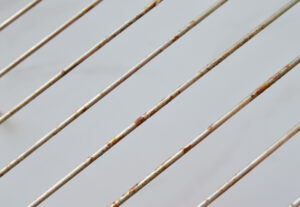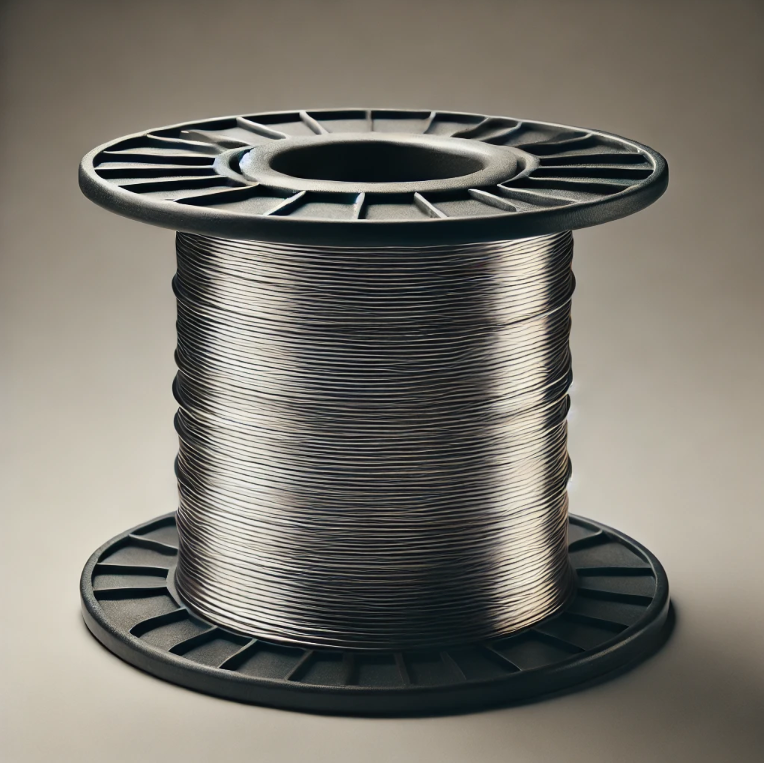Sterling silver wire is a popular material among jewelers and craft enthusiasts alike, renowned for its beauty, durability, and versatility. With 92.5% silver and 7.5% other metals (typically copper), this precious metal offers a balance of strength and workability that makes it ideal for a wide range of applications. Sterling silver wire is used for a wide variety of applications, and its properties and tips for using them will be discussed in this blog.
The Appeal of Sterling Silver Wire
Sterling silver wire has been a staple in jewelry making and other crafts for centuries. Its popularity stems from several key attributes:
- Aesthetic Appeal: Sterling silver has a brilliant luster that can complement any design. Its bright, white shine enhances the appearance of gemstones and other materials it is paired with.
- Durability: The addition of copper makes sterling silver more durable than pure silver, which is too soft for most functional items.
- Workability: Silver wire is relatively easy to bend, twist, and shape, making it a favorite for intricate designs and detailed work.
- Affordability: While more expensive than base metals, silver is more affordable than gold and platinum, making it accessible for both hobbyists and professional jewelers.
Uses of Sterling Silver Wire
The versatility of sterling silver wire means it can be used in a wide array of applications. Here are some of the most popular uses:
Jewelry Making
- Wire Wrapping: Wire wrapping is a technique where the wire is twisted and turned to create intricate designs. This method can be used to encase stones, create pendants, earrings, rings, and more. The flexibility of silver wire makes it ideal for this technique.
- Chain Making: Sterling silver wire can be used to create chains of various styles, including link chains, box chains, and rope chains. Handmade chains add a personal touch to jewelry pieces and can be customized in length and style.
- Earrings and Bracelets: The wire can be shaped into hoops, dangles, and other earring forms. It’s also perfect for creating bangle bracelets or delicate chain bracelets adorned with charms.
- Bezel Setting: Silver wire can be flattened and shaped into bezels to hold cabochons and other stones securely in place. This setting technique is widely used in rings, pendants, and brooches.
Artistic Sculpture
Beyond jewelry, silver wire is also used in artistic sculptures. Its malleability allows artists to create detailed and delicate works of art, ranging from small decorative items to larger, more complex structures. The wire can be woven, twisted, and soldered to create intricate patterns and designs.
Functional Items
Silver wire is not just for decorative purposes; it is also used in functional items. For example, it can be used to make clasps, fasteners, and findings for jewelry. In addition, its conductive properties make it useful in small-scale electronic applications, though it is not typically used for larger electrical projects due to its cost.

Working with Sterling Silver Wire
To fully harness the versatility of sterling silver wire, it’s essential to understand its properties and how to work with it effectively.
Selecting the Right Gauge
Sterling silver wire comes in various gauges, each suited for different purposes:
- Thin Gauges (28-24): These are used for delicate work such as wire wrapping, fine detailing, and bead work.
- Medium Gauges (22-18): Ideal for making links, jump rings, and general wirework.
- Thick Gauges (16-10): Used for structural elements like frames, clasps, and larger components.
Choosing the right gauge depends on the project’s requirements. Thinner wires are more flexible but less sturdy, while thicker wires offer more strength but can be harder to manipulate.
Tools for Working with Sterling Silver Wire
Having the right tools is crucial for working with sterling silver wire. Here are some essential tools:
- Pliers: Round-nose pliers for making loops, chain-nose pliers for gripping and bending, and flat-nose pliers for flattening and straightening wire.
- Cutters: Flush cutters for clean cuts without leaving sharp edges.
- Mandrels and Jigs: Mandrels for shaping wire into rings and other forms, and jigs for creating consistent patterns and shapes.
- Files and Sandpaper: For smoothing rough edges and polishing finished pieces.
Techniques for Working with Sterling Silver Wire
- Annealing: Sterling silver wire can become work-hardened as it is manipulated. Annealing, or heating the wire, softens it, making it easier to work with. This process involves heating the wire with a torch until it is red hot and then allowing it to cool slowly.
- Soldering: Soldering is used to join pieces of pure silver wire together. This technique requires a soldering torch, solder, flux, and a heat-resistant surface. Proper soldering ensures strong, durable connections.
- Hammering: Hammering can add texture and shape to silver wire. A chasing hammer is often used to create flat or textured surfaces, while a ball-peen hammer can add decorative elements.
- Oxidizing: Oxidizing, or patinating, gives sterling silver an antique look. Liver of sulfur is commonly used for this purpose. After oxidizing, the wire can be polished to highlight raised areas, creating a contrast between light and dark.
Caring for Sterling Silver Wire
To maintain the beauty and durability of sterling silver wire, proper care is essential:
- Cleaning: Regularly clean silver to prevent tarnish. Use a silver polishing cloth or a gentle silver cleaner.
- Storage: Store pure silver wire in a dry, airtight container to prevent oxidation. Anti-tarnish strips can also be used in storage containers.
- Handling: Avoid exposing silver to harsh chemicals, including household cleaners and chlorine, as these can cause tarnish and corrosion.
Projects and Inspiration
To inspire your creativity, here are a few project ideas that showcase the versatility of sterling silver wire:
- Wire-Wrapped Pendant: Use a piece of cabochon or gemstone and wrap it with sterling silver wire to create a stunning pendant. Add intricate twists and loops for a unique design.
- Sterling Silver Hoop Earrings: Create classic hoop earrings by shaping medium-gauge silver wire into circles and adding a simple clasp.
- Beaded Bracelet: Combine silver wire with beads to create a delicate bracelet. Use thin wire to string the beads and create loops for a clasp.
- Sculptural Art: Explore your artistic side by creating a small wire sculpture. Experiment with different gauges and textures to bring your vision to life.
- Custom Chain: Make your own chain by forming links from pure silver wire. Combine different link shapes and sizes for a unique piece.
Advanced Techniques and Professional Tips
For those looking to advance their skills, here are some professional tips and advanced techniques for working with sterling silver wire:
- Granulation: This ancient technique involves creating tiny silver balls and fusing them to a base piece to create intricate patterns. It’s a meticulous process that adds a unique texture to your designs.
- Filigree: Filigree involves creating delicate, lace-like designs with thin sterling silver wire. This technique requires precision and patience but results in stunningly intricate pieces.
- Chainmail: Learn the art of chainmail, a technique that involves linking small rings of sterling silver wire to create intricate patterns. This method is used to make bracelets, necklaces, and even armor.
- Viking Knit: Viking knit, or trichinopoly chain, is an ancient technique used to weave wire into a tubular chain. This method creates a flexible yet sturdy chain, perfect for bracelets and necklaces.
- Electroforming: Electroforming involves coating a non-metallic object with a thin layer of metal using an electrical current. This technique can be used to create unique pieces with organic shapes and textures.
Advantages and Disadvantages of Sterling Silver Wire:
Here are the advantages and disadvantages of sterling silver wire:
| Advantages of Sterling Silver Wire | Disadvantages of Sterling Silver Wire |
|---|---|
| Aesthetic Appeal: Brilliant luster that enhances any design. | Tarnishing: Susceptible to tarnishing over time. |
| Durability: More durable than pure silver due to added copper. | Cost: More expensive than base metals like copper or aluminum. |
| Workability: Easy to bend, twist, and shape for intricate work. | Maintenance: Requires regular cleaning to maintain its shine. |
| Versatility: Suitable for various applications in jewelry and art. | Allergic Reactions: Some people may have allergies to the copper content. |
| Conductivity: Good electrical conductivity for small applications. | Softness: Still softer than metals like steel, which can limit its use in some structural applications. |
| Resale Value: Retains value better than base metals. | Oxidation: Can oxidize when exposed to certain chemicals or conditions. |
| Affordability: Cheaper than gold and platinum. | Weight: Heavier than some other metals used in jewelry making. |
| Widely Available: Easily accessible from various suppliers. | Color Consistency: May require rhodium plating to prevent yellowing over time. |
| Customizable: Can be combined with gemstones and other materials. | Fire Stain: Can develop a fire stain when heated during soldering. |
Sterling silver wire’s versatility, aesthetic appeal, and workability make it a favorite material for a wide range of applications, from jewelry making to artistic sculpture and functional items. You can unlock endless creative possibilities with this exceptional material if you understand its properties and master various techniques. Sterling silver wire is an enjoyable and inspiring material to work with, regardless of whether you’re a beginner or an experienced artisan.
Thank you for taking the time to read our blog. We hope that the information above helped you in the search for the right product for your project.
If you are interesting in learning more about wires, check out our blog about Pure Silver Wire or take a look at our range of Stainless Steel Wires.
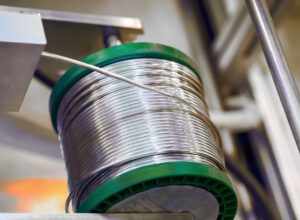
Nichrome Wire Safety: Top Tips for Working Safely
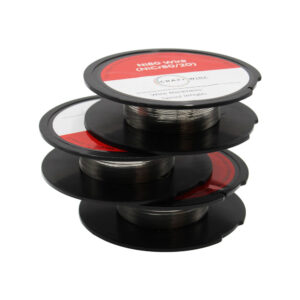
Best Wire for Electronics Projects
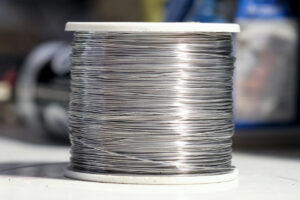
Is Ni80 Wire Suitable for DIY Heating Elements
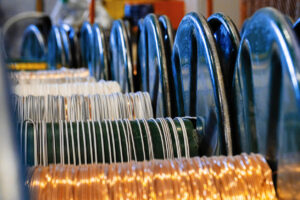
Wire Grades Explained
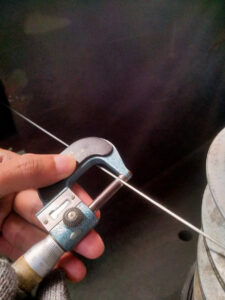
How Wire Diameter Affects Strength and Flexibility
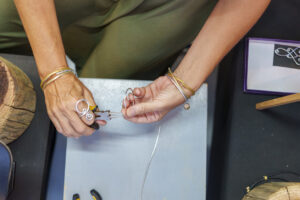
How to Cut and Shape Wire for Custom Applications

Can Wire Be Used in 3D Printing?
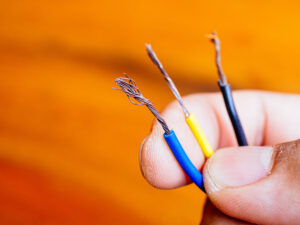
How Wire Composition Affects Conductivity
